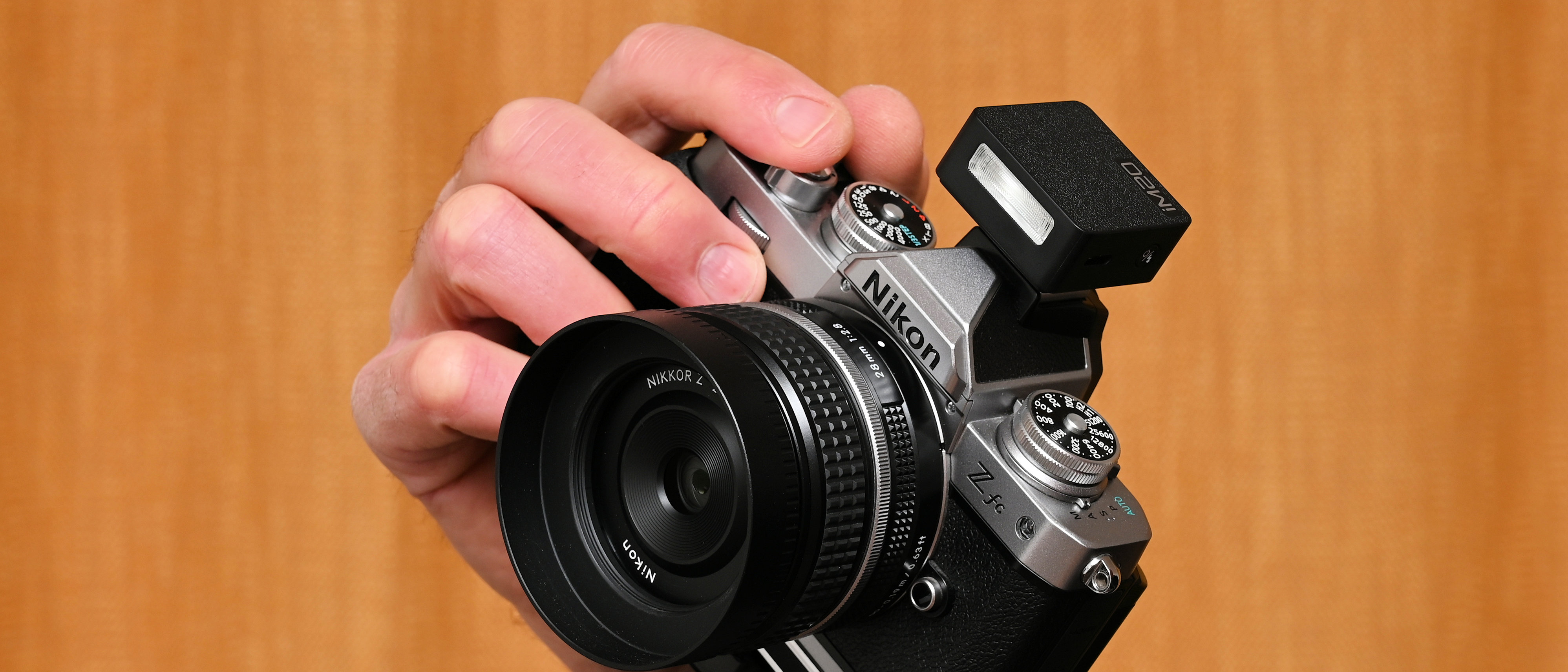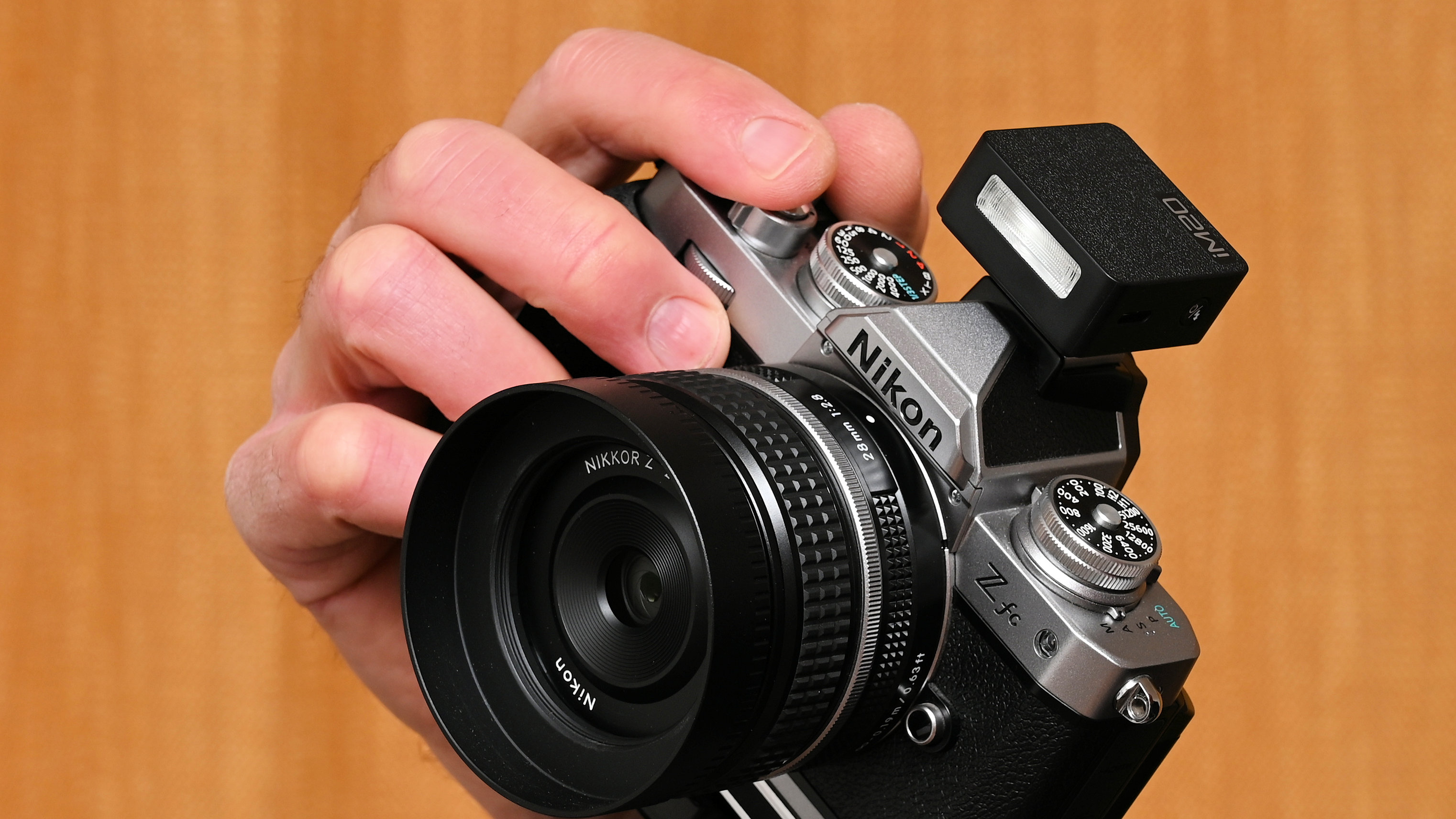
Godox makes some of my all-time favorite flashguns. I’ve been using a pair of Godox Ving V860III flashguns and a Godox XPro i-TTL RF wireless trigger with my Nikon Z system cameras for the last couple of years and they’ve done a brilliant job. I’ve also been impressed with the round-headed Godox V1, Godox V1 Pro and Godox V100 flashguns. All in all, I think that Godox makes some of the best flashguns on the market, that are also among the most cost-effective. The iM20 that I’m reviewing here is something rather different. Whereas all of the above come in various options that are dedicated to specific camera systems, and have a powerful maximum output, the iM20 is kind of the opposite. Many mirrorless cameras these days don’t feature a pop-up flash, and the iM20 aims to be a convenient substitute. It’s really tiny, weighs next to nothing, has a relatively low maximum output (much like a pop-up flash) and features a universal fitting rather than being dedicated to particular camera brands. Let’s just say the iM20 keeps things small and simple.
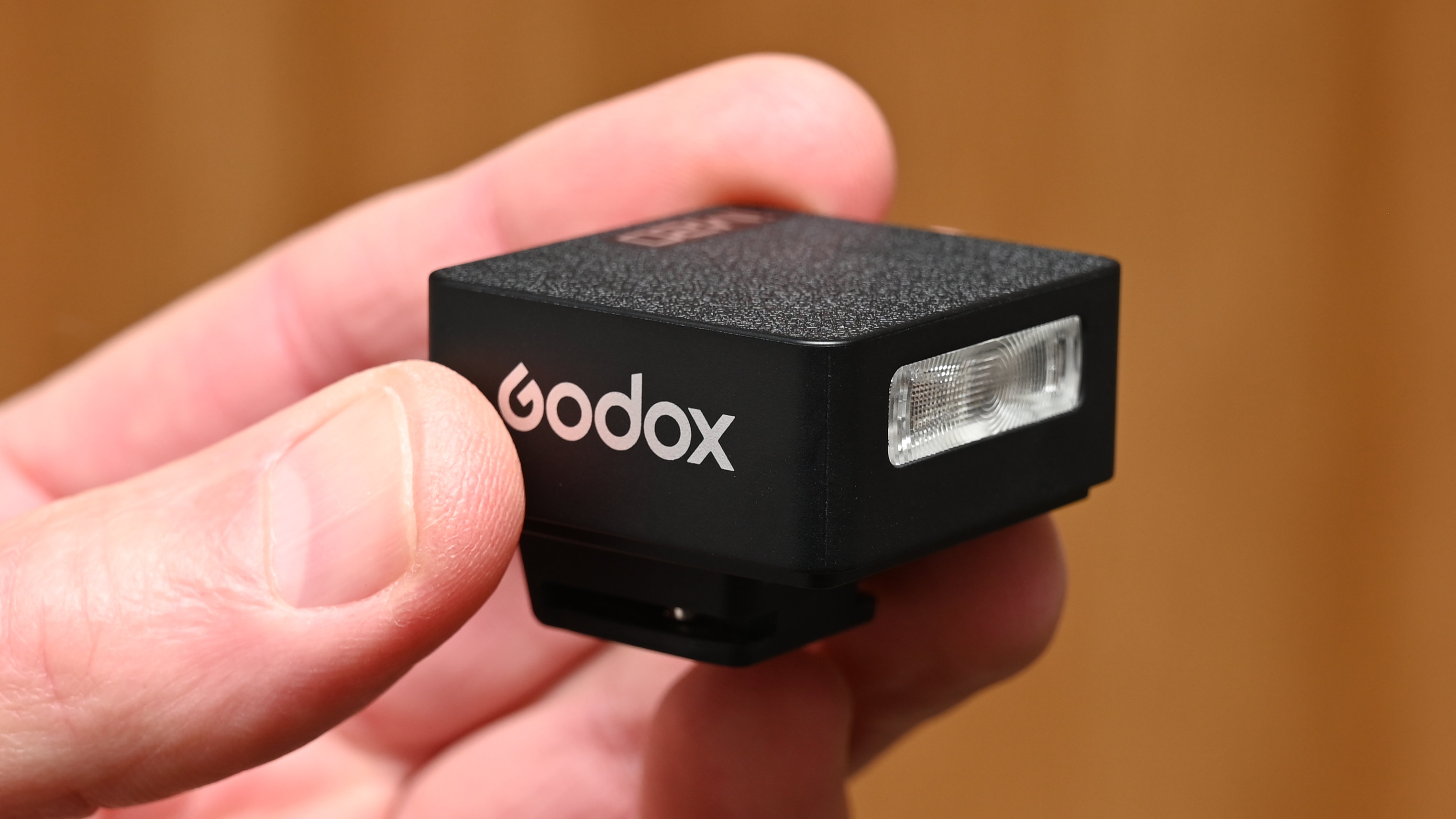
Godox iM20: Specifications
Godox iM20: Price
Powerful, dedicated flashguns tend to be expensive to buy, especially if you go for own-brand options from the top camera manufacturers. Up-market, third-party options can be relatively affordable, like the Godox Ving V860III at around $209 / £179 / AU$295, but they’re still pretty weighty and pricey. The Godox iM20 has a bargain-basement price tag of just $34 / £32 / AU$80, making it one of the most inexpensive flashes around. Sure, it’s relatively tiny, low in maximum output power and lacking in fancy features, but it still promises to be great value at the price.
Godox iM20: Design & Handling
Serious photographers with creativity in their hearts minds often shun pop-up flash modules that are built into cameras. Maybe that’s why relatively few up-market mirrorless cameras these days feature a pop-up flash. Call me old-fashioned but I actually rather like a bit of pop-up flash. I’ve always found them very useful for filling in shadows for sunny-day portraits, and for adding a bit of extra ‘available light’ with the utmost in convenience. I also used to like the way you could often use them for triggering a more powerful, off-camera flashgun, but that’s another story and not really within the remit of the iM20, unless you’re using a remote flash with an optical slave for triggering.
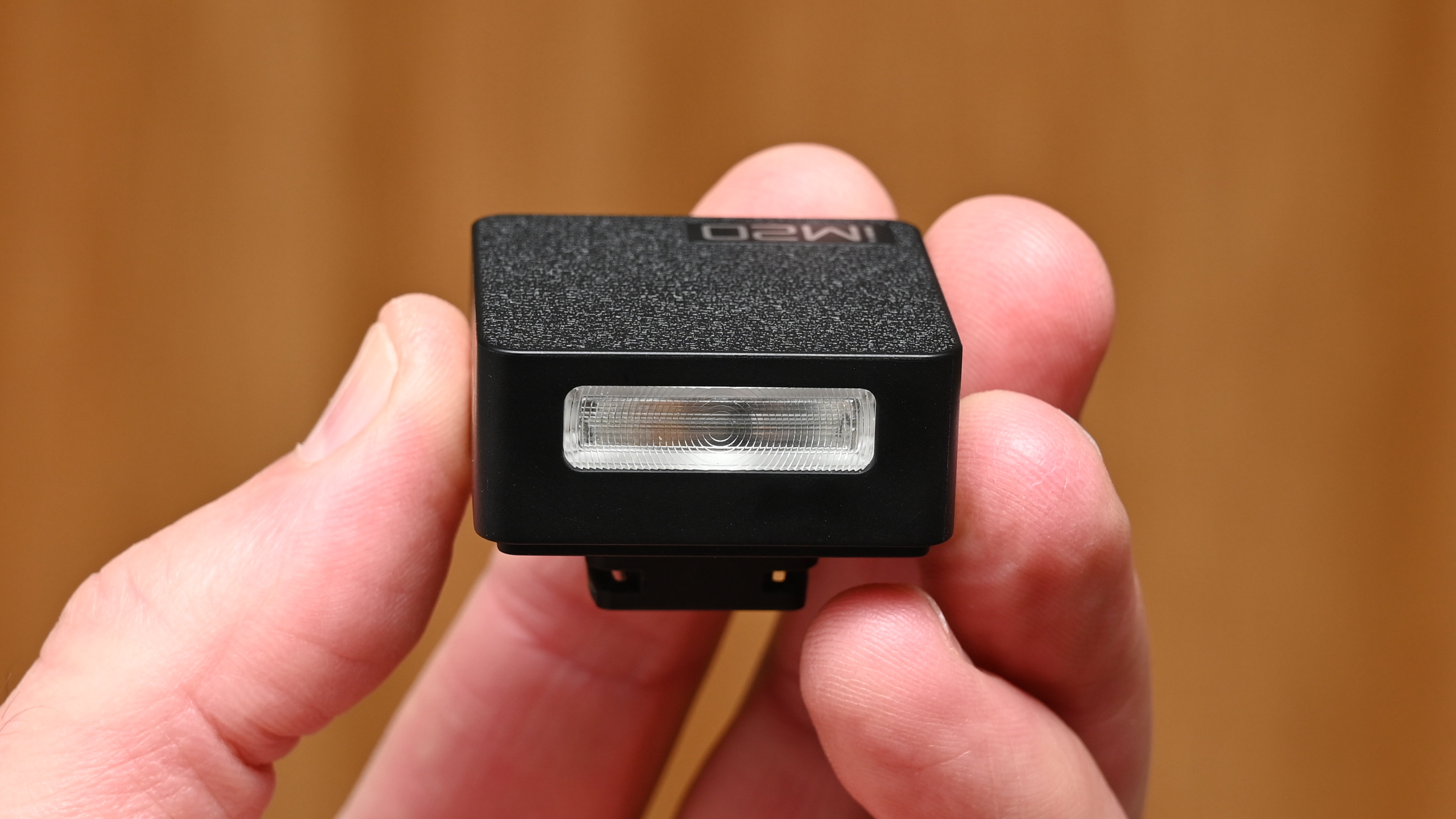
The iM20 is designed to be tiny. It has vital statistics of just 39x38x30mm (1.5x1.5x1.2") and weighs in at a mere 31g (1.1oz). Suffice it to say you can pop it in a spare pocket and hardly feel the difference. It’s the next best thing to a pop-up flash, for cameras that don’t have one. It’s so small and light that there’s no clamp to lock it into the camera’s hot shoe – you just slide it in when you want to use it and slide it out again when you’re done.

Godox actually launched two very similar mini-flashes at the same time, one being the iM20 and the other being the iM22. The internals are identical but the iM20 is designed to be squat and sit low in the hot shoe. The iM22 has a higher but slimmer profile. It therefore sticks up higher in the hot shoe and is a little better suited to use with physically longer lenses. You could also argue that the taller iM22 might be marginally less prone to causing the dreaded red-eye effect when taking portrait shots.
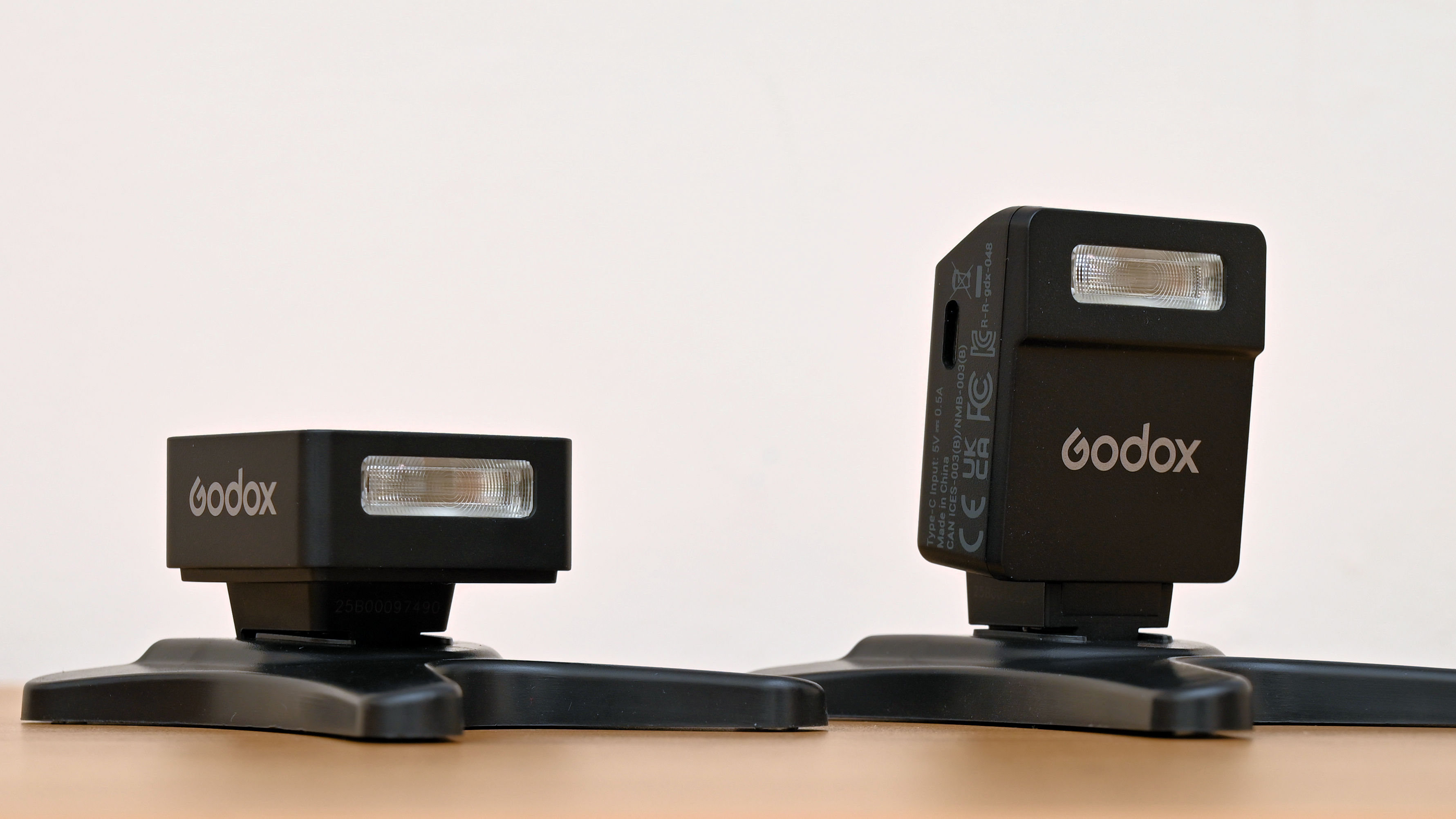
Being so small, there’s no room in the flash for inserting batteries. Instead, it runs on an internal, rechargeable Li-ion battery. It’s supplied complete with a USB-C charging cable and, depending on what charger you’re using, you can expect to fully charge a dead battery in around 70 minutes. That should see you through about 440 full-power flashes before it runs out of juice again – many more flashes at lower power settings.
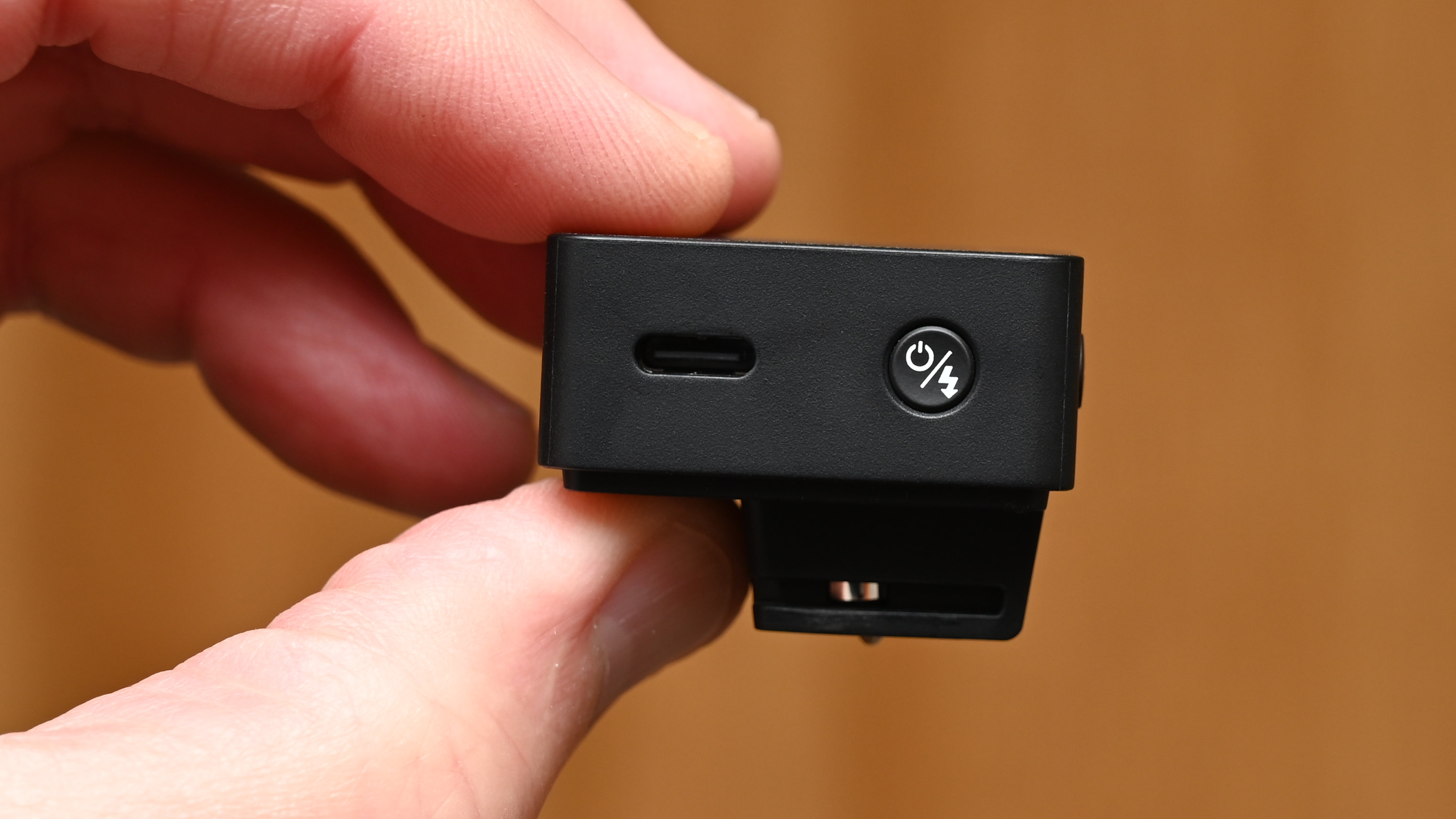
Speaking of power settings, there are five different power levels to choose from, in the equivalent of 1EV steps from full power down to 1/16th power. There’s no flash metering, neither based on a light-sensitive cell in the flash, nor using TTL (Through The Lens) flash metering, the latter because the flashgun isn’t available in dedicated options for different camera brands. You therefore need to set the power level yourself. It’s easy to do, using +/- keys on the back of the flash, and there’s a handy 5-bar LED display to show the current level.
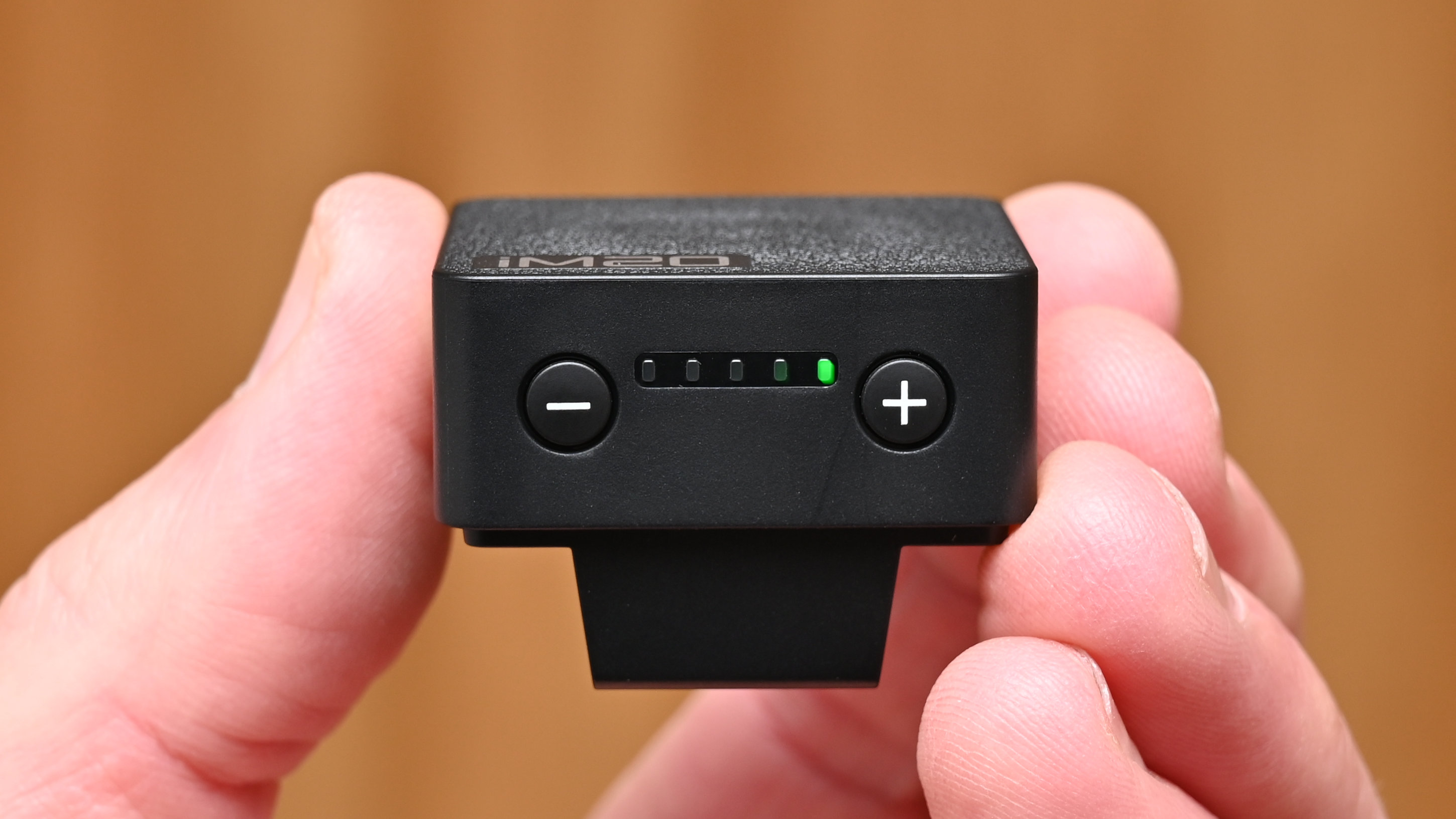
As a non-dedicated flash, the iM20 is designed to be as universal as possible. As such, it only has a solitary, central electronic connection pin in its mounting foot. This is used for triggering the flash while it’s sitting in the hot shoe of the camera. Naturally, there are some cameras that don’t have a ‘universal’ hot shoe, but an adapter is usually available for these.
Godox iM20: Performance
I wouldn’t expect mighty maximum power output from such a tiny flash and, sure enough, Godox doesn’t even state a Gn (Guide number) rating for the iM20. In my tests, using a Sekonic Flashmate L-308X / L-308X-U light meter, I clocked the iM20 at a maximum of Gn 5.6 / 18 (ISO 100, m / ft). For comparison, that’s about the same ‘real world’ result that I got from the pop-up flash of a Nikon Z50II, which has an official rating of Gn 7 / 22. The pop-up flash of the Canon EOS R50 is rated at Gn 6 / 20.
Ultimately, even at its maximum power output, the iM20 is better suited to adding a little fill-in flash, with ambient indoor or outdoor lighting being the main source. In my tests, I found that reducing the power output in successive steps gave a pretty accurate, consistent 1EV drop per step, apart from when switching to the very lowest setting. As such, the f/number needed for a nominally accurate exposure at one meter dropped successively from f/5.6 at maximum power, through f/4, f/2.8, f/2 and finally to f/1.7 at the lowest power setting.

The ‘look’ of the flash effect from the iM20 is pretty retro, as it’s fired from very low and straight on at the subject. This makes for very little shadow or modelling, giving fairly flat and two-dimensional looking results. It also means that very shiny and reflective surfaces can look pretty blitzed. With a ‘proper’ flashgun, I usually bounce the flash off a ceiling or wall to soften the effect but that’s not possible in this case. Firstly, the iM20 doesn’t really have enough power under the hood to enable bounce flash, and secondly the flash tube is fixed without any bounce or swivel facility.
One way to get a more 3D look to images is to use the flash off-camera. You could do this by investing in a fancy wireless trigger and receiver setup but a good old-fashioned remote flash cord is more in keeping with the design and cost of the iM20.

If you’re using the iM20 as the main source of illumination, rather than trying to add it to ambient lighting, you’ll need to switch your camera to Manual shooting mode and dial in your preferred shutter speed and aperture, for example 1/60th of a second at f/5.6. That’s because, with no additional pins for dedication, the camera doesn’t even know that a flash is attached to the hot shoe. With mirrorless cameras, you’ll also need to disable the live exposure preview function in the viewfinder or rear screen, otherwise your preview image can look very dark or black under low lighting, after you’ve selected a flash-friendly shutter speed and aperture.
I found that the color temperature remained pretty consistent at all power settings. Again, with the camera not knowing that a flash is in use, it can pay to switch to the Flash white balance setting if you’re using the iM20 as your main lighting source, rather than just for a bit of fill-in flash.
Recycle speed after each flash can be an important performance factor. I found that recycling times were pretty much instantaneous at the lowest 1/16 and 1/8 settings, rising to 0.6 seconds after a ¼ power flash, 1.4 seconds after a ½ power flash and 2.5 seconds after a full-power flash. That’s pretty much what I’d expect, so recycling speeds aren’t particularly fast, but they’re not too pedestrian either.

Godox iM20: Lab Results
We test all available features for each flashgun that goes through out labs. To test power output, we used a Sekonic flash meter placed at a distance of one meter from each flashgun. We check the complete range of manual power settings, in one-stop increments. Based on a sensitivity of ISO 100, the figures correlate directly with the Gn (Guide number) in meters. The results are double-checked by taking shots of a gray card with the appropriate lens apertures and using the camera’s histogram display in playback mode. This is done for flash zoom settings of 24mm, 50mm and 105mm (in full-frame terms), where available.
We also check the accuracy and consistency of electronic/intelligent TTL (Through The Lens) flash metering, where featured, and the speed with which each flashgun can recycle to a state of readiness after a full-power flash, using both Ni-MH and alkaline cells, or a Li-ion power pack where supplied.
Power output:
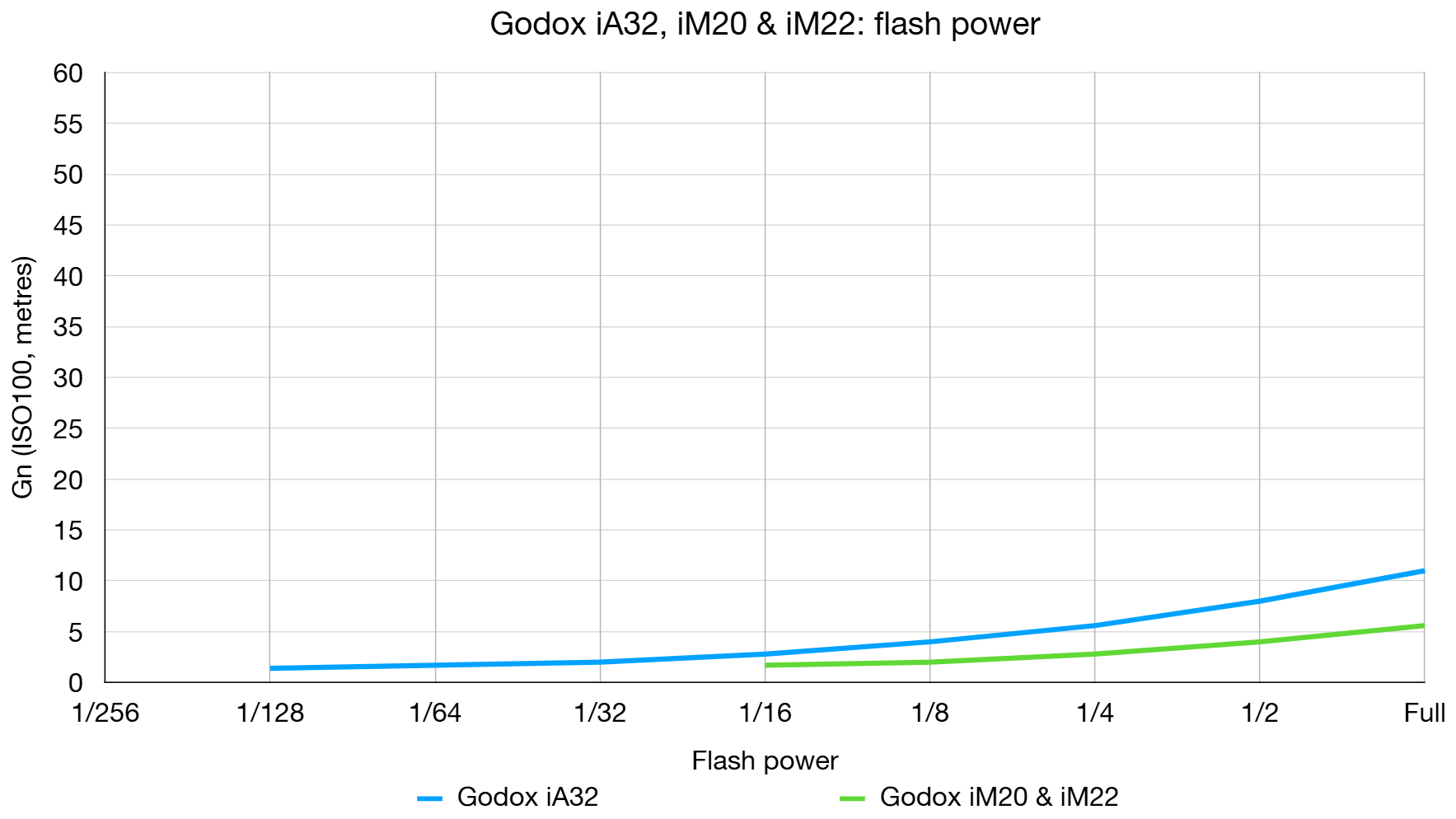
Maximum power output is modest to say the least but bear in mind that many top-end flashguns with a maximum power rating of, say, Gn 60, only provide this much power at their longest zoom setting and may drop to around Gn 25 at their shortest zoom length, more equivalent to the fixed length of the iM20. Even so, the tiny iM20 is a lot less powerful.
Recycle speed:
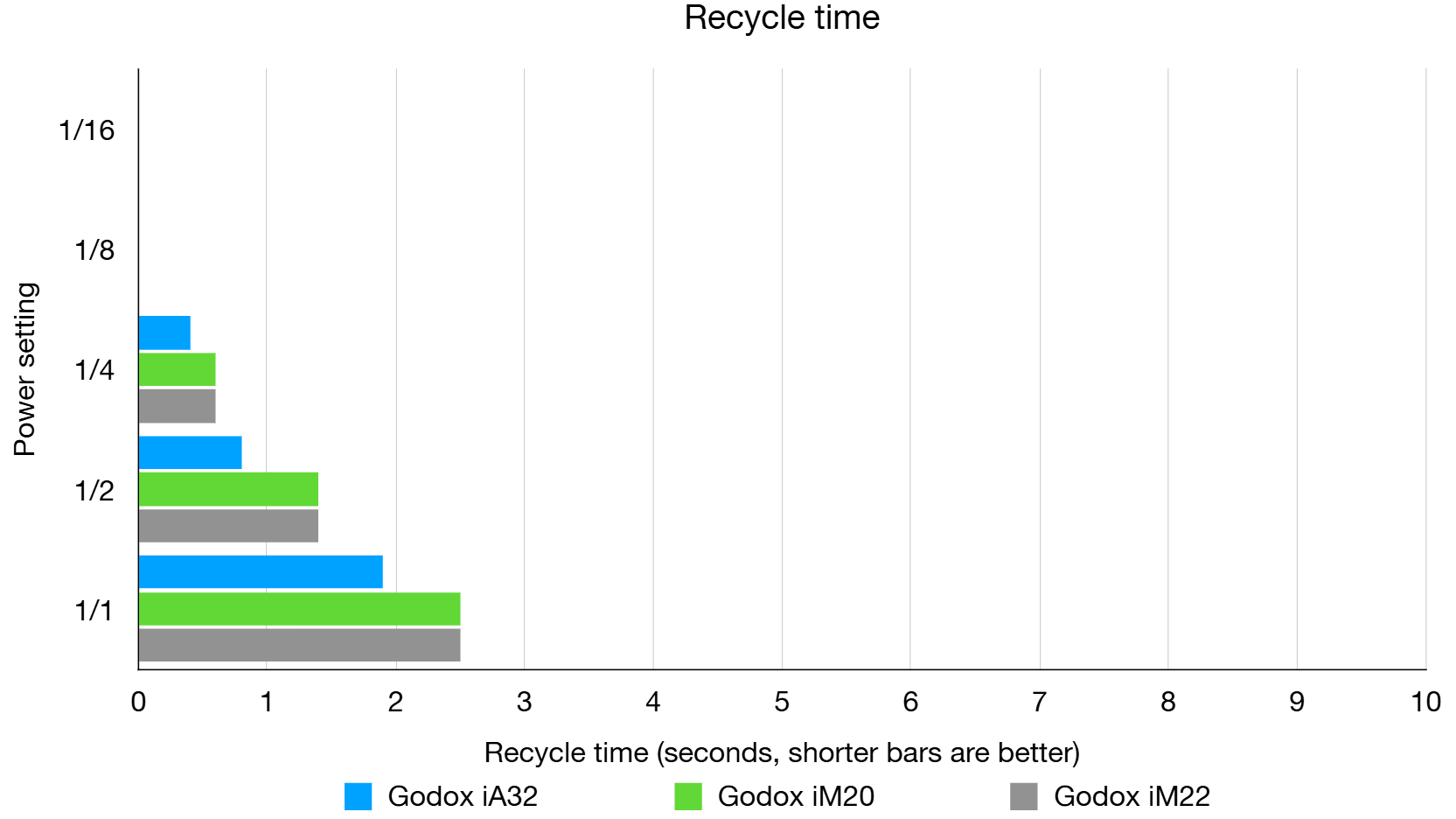
I’ve come to expect flashguns that run on a Li-ion battery rather than alkaline or Ni-MH AA batteries to have very fast recycling speeds. The time taken by the iM20 isn’t overly quick, considering the relatively low maximum output power, but it’s no slouch.
Godox iM20: Verdict
I feel that the Godox iM20 fills a gap, even if it’s only a small gap. I quite often miss the pop-flash of my older cameras, which is usually missing in modern mirrorless designs. The iM20 fits the brief in being quick and easy to pull out of a spare pocket and slide into my camera’s hot shoe. It’s not particularly powerful, which is no surprise considering that it’s so small, but it can be really useful for adding a little fill flash when I want to travel light, instead of carting around a full-sized flashgun as well as my camera. Sometimes smaller is better.
